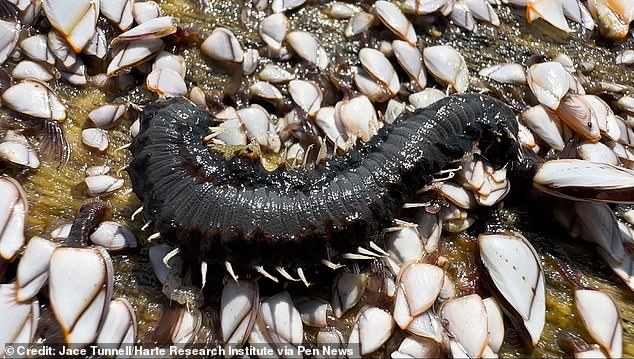Experts have warned beachgoers in Texas not to touch creatures reminiscent of “their worst nightmares.”
The creatures, known as fireworms, measure between 15 and 30 centimetres long and have a sting that can make humans feel as if their skin is on fire for hours.
Their dark brown bodies have bristles filled with neurotoxins that are released when they come into contact with human skin and inject a venom that can also cause dizziness and nausea.
Researchers reported that several fireworms were found on barnacle logs that washed ashore on Mustang Island and Padre Island near Corpus Christi.
Fireworms are typically found in the Gulf, Atlantic Ocean and Mediterranean, and researchers warn beachgoers to keep their distance.
Fireworms have washed up on Central Texas beaches on Mustang Island and Padre Island
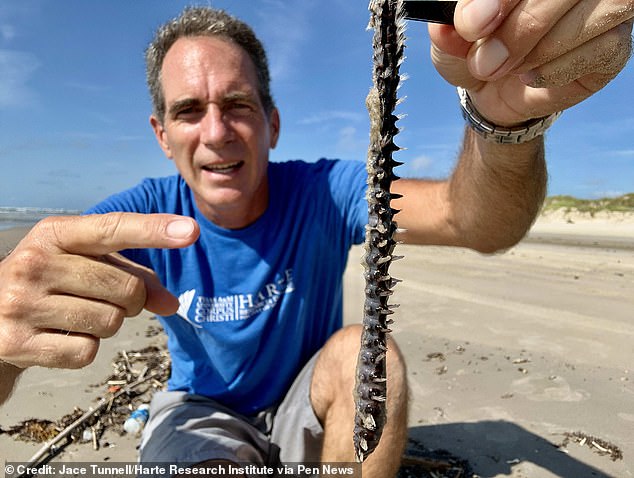
Jace Tunnell (pictured) found the fireworms on two Texas beaches and is warning beachgoers not to touch the creatures.
“The reason it’s called a fireworm is because when it bites you it feels like fire,” said Jace Tunnell, director of community engagement at the Harte Research Institute.
“If you touch it, it can easily stick to your skin and cause intense pain for about three hours.”
There are 28 types of fireworms worldwide, but the Harte Research Institute for Gulf of Mexico Studies identified the fireworms found in Texas as Amphinome rostrata because of their dark brown bodies, small heads and tiny antennae.
These creatures can live up to nine years and although they are not usually aggressive, they use their poisoned bristles as a defense mechanism when they feel threatened.
Although its bite does not cause hospitalization or death, it can cause dizziness, nausea and fever, and leaves a red mark at the site that does not disappear for several weeks.
“I’ve seen videos of people who have been bitten before and even a month later, there will still be red marks,” Tunnell said. News from the pen.
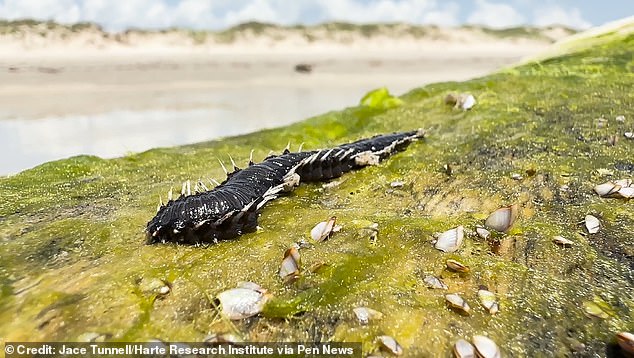
Fireworms have bristles containing neurotoxins that can cause an intense burning sensation for three hours.
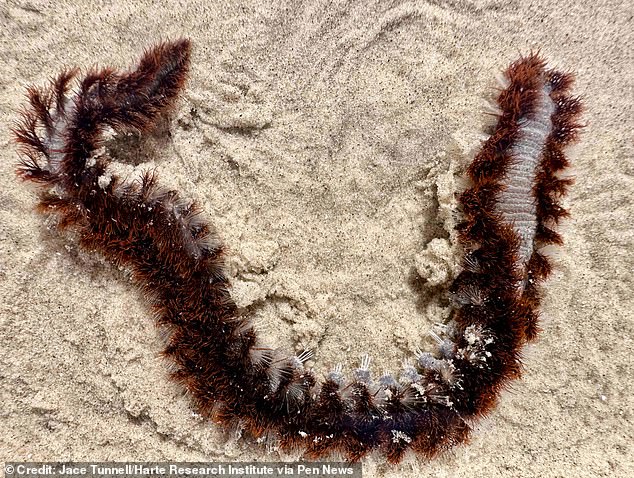
The bristles can also cause dizziness, nausea and fever if injected into the skin.
The size of the fireworm population in the Gulf remains unknown due to a lack of research on the species.
‘These creatures can be found all over the world, especially as they float on debris in ocean currents.
‘In recent weeks we have had a lot of waste washed up by barnacles, which are their main source of food.
“Therefore, our assumption is that they simply appear because ocean currents and winds carry them over the debris they are traveling on.”
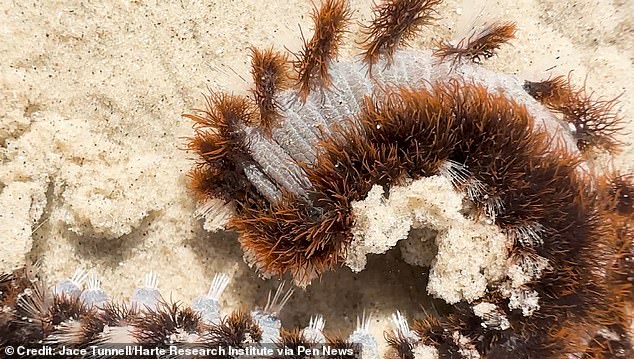
Fireworms are not considered aggressive creatures, but they do use their bristles as a defense mechanism if they feel threatened.
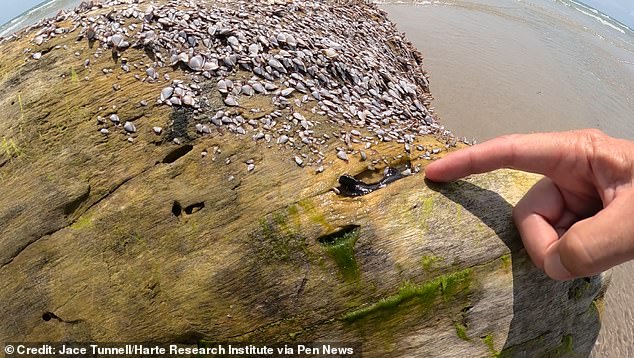
Jace Tunnell found the fireworms on barnacle-covered logs that washed ashore.
According to Tunnell, it can be difficult to find fireworms if people don’t look for them: “Our hope is that by letting people know these worms are coming, they’ll know what to look for and be able to tell others.”
Bathers should carry tape to remove the bristles if they sting and clean the area with a mixture of vinegar and warm water to relieve the burning sensation.
They can reproduce asexually, dividing their bodies into two or more parts and regenerating heads or tails into fully developed fireworms.
The creatures can also reproduce through regular mating that usually occurs between two and five days after a full moon.
Tunnell advised people to avoid touching the fireworms, but suggested observing them in the water.
“They are such cool looking creatures if you can get them in the water,” he said, adding: “I suggest taking pictures and then releasing them back into the ocean.”


